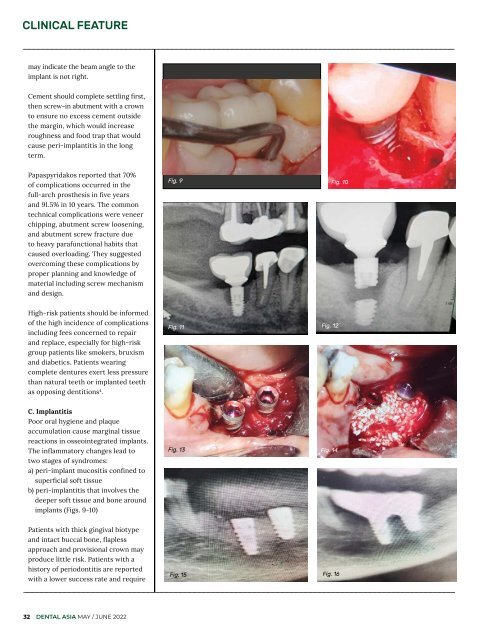Dental Asia May/June 2022
For more than two decades, Dental Asia is the premium journal in linking dental innovators and manufacturers to its rightful audience. We devote ourselves in showcasing the latest dental technology and share evidence-based clinical philosophies to serve as an educational platform to dental professionals. Our combined portfolio of print and digital media also allows us to reach a wider market and secure our position as the leading dental media in the Asia Pacific region while facilitating global interactions among our readers.
For more than two decades, Dental Asia is the premium journal in linking dental innovators and manufacturers to its rightful audience. We devote ourselves in showcasing the latest dental technology and share evidence-based clinical philosophies to serve as an educational platform to dental professionals. Our combined portfolio of print and digital media also allows us to reach a wider market and secure our position as the leading dental media in the Asia Pacific region while facilitating global interactions among our readers.
You also want an ePaper? Increase the reach of your titles
YUMPU automatically turns print PDFs into web optimized ePapers that Google loves.
CLINICAL FEATURE<br />
may indicate the beam angle to the<br />
implant is not right.<br />
Cement should complete settling first,<br />
then screw-in abutment with a crown<br />
to ensure no excess cement outside<br />
the margin, which would increase<br />
roughness and food trap that would<br />
cause peri-implantitis in the long<br />
term.<br />
Papaspyridakos reported that 70%<br />
of complications occurred in the<br />
full-arch prosthesis in five years<br />
and 91.5% in 10 years. The common<br />
technical complications were veneer<br />
chipping, abutment screw loosening,<br />
and abutment screw fracture due<br />
to heavy parafunctional habits that<br />
caused overloading. They suggested<br />
overcoming these complications by<br />
proper planning and knowledge of<br />
material including screw mechanism<br />
and design.<br />
Fig. 9 Fig. 10<br />
High-risk patients should be informed<br />
of the high incidence of complications<br />
including fees concerned to repair<br />
and replace, especially for high-risk<br />
group patients like smokers, bruxism<br />
and diabetics. Patients wearing<br />
complete dentures exert less pressure<br />
than natural teeth or implanted teeth<br />
as opposing dentitions 4 .<br />
Fig. 11 Fig. 12<br />
C. Implantitis<br />
Poor oral hygiene and plaque<br />
accumulation cause marginal tissue<br />
reactions in osseointegrated implants.<br />
The inflammatory changes lead to<br />
two stages of syndromes:<br />
a) peri-implant mucositis confined to<br />
superficial soft tissue<br />
b) peri-implantitis that involves the<br />
deeper soft tissue and bone around<br />
implants (Figs. 9-10)<br />
Fig. 13 Fig. 14<br />
Patients with thick gingival biotype<br />
and intact buccal bone, flapless<br />
approach and provisional crown may<br />
produce little risk. Patients with a<br />
history of periodontitis are reported<br />
with a lower success rate and require<br />
Fig. 15 Fig. 16<br />
32 DENTAL ASIA MAY / JUNE <strong>2022</strong>


















